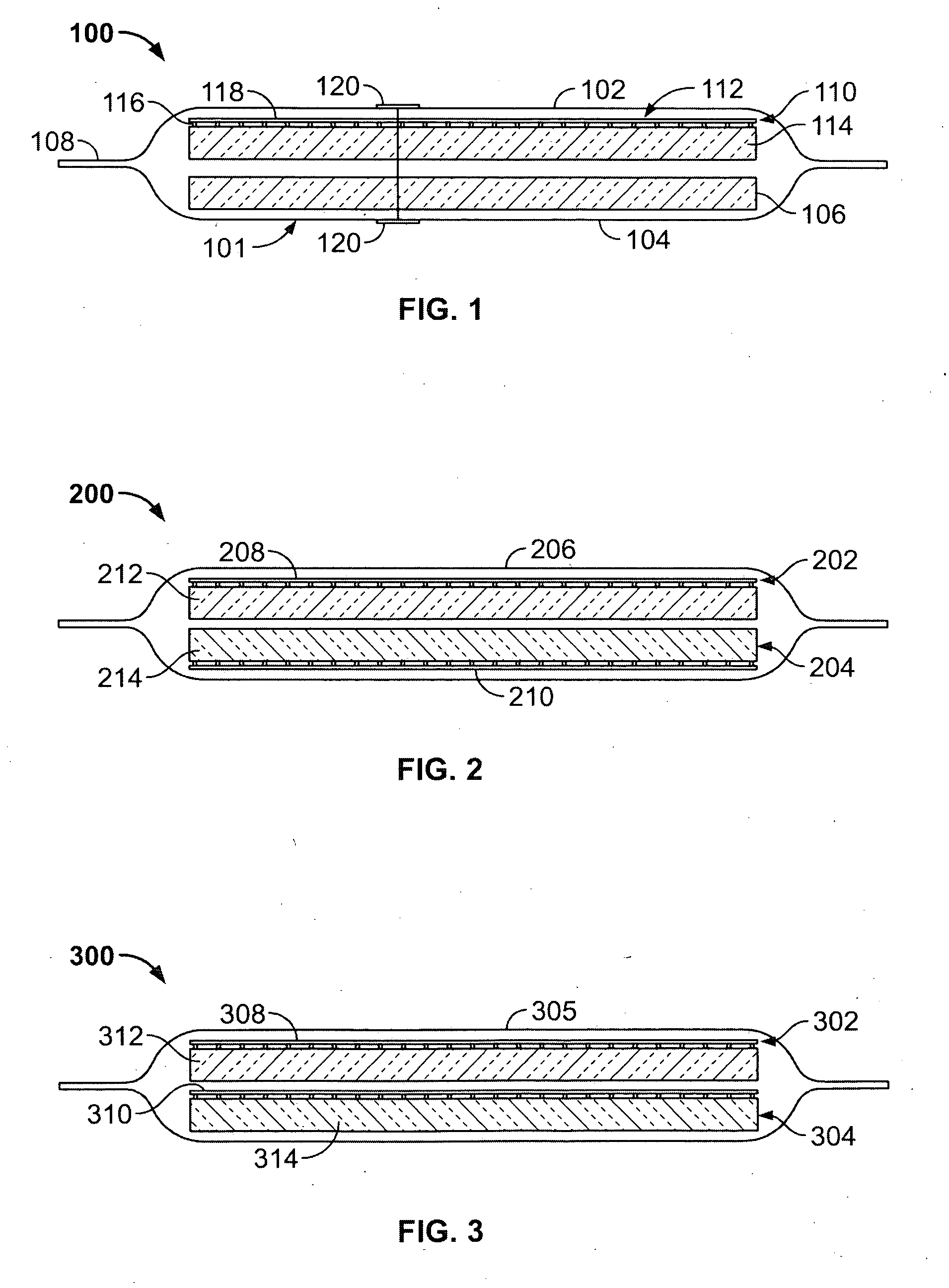Light weight fire-blocking insulation blanket with improved durability and handleability
a technology of insulation blankets and fire-blocking sheets, which is applied in the field of insulation blankets, can solve the problems of inability to meet the flammability requirements of faa, the effect of reducing the and ignoring the need for maintaining the same high level of protection over the expected service life of the blank
- Summary
- Abstract
- Description
- Claims
- Application Information
AI Technical Summary
Benefits of technology
Problems solved by technology
Method used
Image
Examples
example 1
[0040] A non-woven oriented 10×12 thread per inch scrim of 70 denier polyamide fiber was applied to one side of a 5 mil aramid / mica Nomex® Type 418™ paper using a water-based polyvinyl chloride adhesive applied to the fill yarns only of the scrim. The fill yarns at 12 per inch were wrapped over and around the warp yarns at 10 per inch and the mica-aramid paper, which was wrapped around on a cylindrical tube. The adhesive was cured in a cylindrical convection oven, then the aramid / mica was slit to release it from the cylinder, lain flat, and collected on a finish roll. The finish roll and a roll of 0.43 pounds / cubic foot (pcf) one inch thick MICROLIGHT™ AA fiberglass batting from Johns Manville Corporation were loaded on a hot roll laminator and laminated together using a hot roller at 375° F. and a nip pressure of 80 psi. The resulting fiberglass batting laminate was cut to length and assembled into a finished aircraft insulation blanket configured according to FIG. 1, using ORCON® ...
example 2
[0041] A length of non-woven ceramic 3 mil fiber paper, supplied by 3M under the trade name Nextel® 312, was reinforced as described in example 1. The resulting reinforced ceramic paper was laminated to a length of one inch thick, 0.34 pcf MICROLIGHT™ AA fiberglass batting. The resulting laminate was assembled into an insulation blanket configured according to FIG. 1, using ORCON® KN-201™ polyimide reinforced film for the protective covering. This blanket was tested and found compliant with FAA Rule 25.856 paragraph B.
[0042] Lamination of a reinforcement scrim to the high-strength layer may provide a substantial increase in the tear resistance, penetration resistance, puncture resistance, and other mechanical properties of the high strength layer. For example, lamination of a scrim as described in Example 1 to aramid / mica Nomex® Type 418™ paper, 3 mil or 5 mil thick, respectively, increased the tear strength of the high-strength layer by a factor of about ten, as shown in FIG. 4. L...
PUM
| Property | Measurement | Unit |
|---|---|---|
| density | aaaaa | aaaaa |
| thickness | aaaaa | aaaaa |
| thickness | aaaaa | aaaaa |
Abstract
Description
Claims
Application Information
 Login to View More
Login to View More - R&D
- Intellectual Property
- Life Sciences
- Materials
- Tech Scout
- Unparalleled Data Quality
- Higher Quality Content
- 60% Fewer Hallucinations
Browse by: Latest US Patents, China's latest patents, Technical Efficacy Thesaurus, Application Domain, Technology Topic, Popular Technical Reports.
© 2025 PatSnap. All rights reserved.Legal|Privacy policy|Modern Slavery Act Transparency Statement|Sitemap|About US| Contact US: help@patsnap.com



